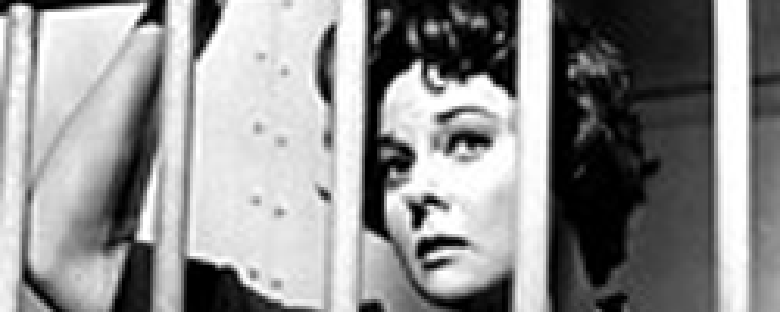Reviews
I Want to Live! is the story of Barbara Graham, executed for murder in California in 1955. Graham died in the gas chamber convicted of murdering an elderly widow named Mabel Monahan, but she may have been framed for the murder by two acquaintances who were trying to save their own skins. I hesitate to call the film the “true story” of her trial and execution because there is still doubt regarding her innocence. Regardless, the film maintains that Graham was wholly innocent of the crime for which she was executed, but gleefully shows her committing other crimes such as prostitution, perjury, and check kiting.
The film, produced by notorious Hollywood outsider Walter Wanger and directed by Robert Wise, is one of those mongrel films like Mildred Pierce and The Naked Kiss that should be an awful mess but instead comes together to be remarkably effective. There are equal elements of hard-boiled noir, gashouse melodrama, and courtroom potboiler in the film, providing a terrific showcase for a wild performance by Susan Hayward. Hayward won the Oscar for Best Actress in 1959 over Rosalind Russell in Auntie Mame (a big mistake in my book) and Elizabeth Taylor in Cat on a Hot Tin Roof. Apparently, it was a big year for overacting, but Hayward exhibits just the kind of eye-bugging, nostril-flaring overacting that I like. Think Faye Dunaway in Mommie Dearest and you’re almost there. Hayward had five Best Actress nominations in eleven years — I’m shocked that she had any. Her acting style suggests an unholy mixture of Rosalind Russell, Lucille Ball, and Ethel Merman and she does not, in any way, possess a subtle talent. She is, however, perfect for this film.
Director Wise is content to let Hayward take the film in her teeth from the moment she appears in the film and not let it go until she collapses in the gas chamber two hours later. Hayward’s star entrance is particularly breathtaking: The shot opens on a dingy hotel room, Hayward sits up into the frame, smoking in bed. She looks around and then passes the cigarette to a man’s hand that has just appeared on the right edge of the frame. It’s a small moment, but shows such command of framing, timing, and storytelling that it remind you what a great director Wise really was and how much he learned under the tutelage of Orson Welles. Wise continues to match Hayward move for move with a cornucopia of stylistic tricks such as Dutch angles, whip pans, overhead shots, and jump cuts all choreographed to Johnny Mandel’s hepcat score performed by a jazz combo led by Gerry Mulligan. On paper, the film looks like it should be a complete catastrophe, but Wise holds it all together with a shockingly cool and cynical tone. One weakness in the script is the inclusion of so many last-minute reversals of fortune as to be ludicrous, but if the film is based on actual events, I guess I can’t be too critical. Wise offsets the ups and downs of Graham’s death row stay with extended scenes of the preparation of the gas chamber for Graham’s execution that are truly unnerving.
If you’re a proponent of the death penalty, the film won’t necessarily change your mind, and if you’re not a fan of Susan Hayward, you probably won’t be able to wait for her to get into that damn gas chamber once and for all. The film is worth watching, however, for Wise’s sublime direction and to see a film that was wholly unlike any other made at the time — essentially a big-budget star vehicle version of something Sam Fuller might have written and Otto Preminger might have directed.
We don’t do comments anymore, but you may contact us here or find us on Twitter or Facebook.



